3 Billion Trees - Can the EU do it?
What is the 3 Billion Tree Pledge?
3 billion trees – a big number, a big promise. As part of the EU Biodiversity Strategy for 2030, the European Union committed to planting 3 billion additional trees by 2030. Without a doubt, trees are incredibly important to our natural environment – they provide crucial roles in various ecosystems, are home to many diverse species, absorb carbon, improve human health and well-being and serve essential roles in flood control and water filtration. This EU pledge plans to do just that. By increasing forest cover in the EU, “in full respect of ecological principles: the right tree species in forests, agricultural areas, urban and peri-urban areas and along infrastructure corridors”. Is this promise too good to be true?
The forest expansion rate in the EU has been slow in recent years, and a goal of 3 billion additional trees would double the total forest expansion rate in Europe between 2005 and 2020. It is currently estimated that in the EU, 300 million trees are grown annually. Currently, as of October 2022, the activity under the pledge has resulted in 6,787,146 new trees have been planted, carried out in all 27 countries with help from 28 organisations such as Land Life and ReforestAction.
Afforestation – a solution for the biodiversity and climate crisis?
Afforestation and reforestation are not new policies, humans have been planting trees for centuries. There is a consensus that trees and forests are worthwhile and there is a policy to support it. The EU itself has seen the afforestation of approximately one million hectares of agricultural land between 1994-1999, and 700 hectares between 2000 and 2007. Many countries have afforestation policies in place. Canada’s Forest 2020 Plantation Development and Assessment Initiative, not dissimilar to this pledge, saw the plantation of 6000 hectares of forest and its success encouraged the government’s investment of $3.16 billion to plant 2 billion trees in ten years in 2020. Famously, the African Union put in place the Great Green Wall, an ambitious policy to help combat desertification, the AU has been planting a wall of trees to cover 100 million hectares of land and absorbs 250 million tonnes of carbon from the atmosphere. Other approaches have been taken – in 1981, China put in place a law which requires children over the age of 11 to plant a tree per year.
What is the impact on biodiversity…?
What does planting trees do? Firstly, forests are important loci for biodiversity, representing often dense ecosystems with diverse plants and animals. Forests are thought to be important habitats, “home to 80% of the world’s biodiversity on land”. Planting more trees in forested areas or reforesting struggling forest ecosystems can have many important impacts. Forests are important habitats and maintaining their integrity through reforestation can ensure that wildlife remains in the region and isn’t forced to relocate. Increased forest density and diversity have also been linked to an increase in species richness for fungi and soil invertebrates. Moreover, tree plantation in urban areas (included in the 3 Billion Trees Pledge) has been studied as a positive act that attracts and shelters wildlife species, particularly birds and insects, and provides shade.
Forests are also key for soil quality and resilience. A lack of trees has been seen to cause a sensibility to soil erosion. Trees’ overlapping and interconnected roots provide a structural role in the topsoil layer of land. This topsoil layer can erode (runoff) without trees in place, which in turn risks the land becoming infertile and inhospitable to the plantation. Moreover, afforestation has been found to improve watersheds, which are key for water supply.
.. and for the climate?
The benefits don’t stop there – trees can help us in the fight against climate change. Carbon sequestration is a bit of a buzzword in the environmental sphere but it shouldn’t be dismissed. Restoring forests and increasing generally the number of plants on our earth has the potential to absorb and store large amounts of carbon – these are known as carbon sinks. Through photosynthesis, carbon dioxide is absorbed by trees, and they in turn release oxygen. The absorbed carbon is turned to sugar which is used in the wood, branches and roots, meaning that it remains in the standing tree. Even once the tree dies, it takes years for the carbon to break down, apart from when leaves decompose and when carbon is released more quickly. The age of the tree impacts its carbon sequestration aptitude, with middle-aged trees being the most effective and young trees the least effective due to size. Overall, uneven-aged forests are the best at carbon capture – meaning that planting trees in strategic places would allow for uneven-aged forests and increase the potential for carbon sequestration.
For this reason, afforestation and reforestation are seen as one of the great ‘natural solutions’ for climate mitigation. Policymakers believe these forms of ecosystem services are probable to be of rising importance and relevance due to their impact both for mitigation and adaptation to climate change, and general benefits to our environment. This potential has been recognised internationally with the Paris Agreement emphasising the importance of carbon sinks in order to achieve a balance between emissions and removals. Carbon sinks are a key part of EU environmental policy with recent targets set to increase carbon sinks by 15% compared to today in the land use and forestry sector.
Overall, the pledge could be very powerful in this regard: 3 billion trees covering 2 million ha could remove up to 4 million tonnes of CO2 from the atmosphere already by 2030, and as much as 15 million tonnes by 2050, according to the European Commission. The decision to encourage tree planting, therefore, seems a logical one, both in terms of benefits for climate and biodiversity.
The right tree, in the right place, for the right reason
However, as with most environmental solutions, it is not as clear-cut as it seems.
Simply planting trees isn’t a be-all and end-all solution to our dual crisis.
Virginijus Sinkevičius, the EU’s environment commissioner, commented: “That’s our promise. To plant three billion trees. The right trees, in the right place, for the right reason” – this second half is essential, we can’t simply plant any tree anywhere and assume it is beneficial. It must be done properly – is the 3 billion tree pledge ready for that?
The pledge, in all its ambition, has limitations. With 8 years left, there are still 2.993 billion trees to be planted and yet, given the voluntary nature of the pledge, it is unclear how the number will be reached. The pledge came along with a roadmap which primarily relies on monitoring through the Forest Information System for Europe and the creation of a new app MapMyTree so citizens can upload and monitor their trees and progress. Anyone can plant a tree – but it is essential that native tree species to the area are planted, and that it is done with care and understanding of the surrounding ecosystem.
Avoiding Monocultures
The pledge is ambitious – asking for huge amounts of trees to be planted – but it cannot be stressed enough that monocultures cannot be a solution to short-cut to the end-goal of 3 billion trees. Monocultures were conceptualised as a way to produce as much wood “in as little time as possible and, technically in the simplest manner” in the 18th and 19th centuries in Europe as a response to timber shortages. Their simplicity is at odds with the necessary complexity of biodiversity. In setting high targets for tree plantation, there is the potential that concerned actors would cut corners and plant large plantations of similar species – not a sustainable approach to forestry. As Friends of the Earth International, World Rainforest Movement and FERN, said monoculture tree plantations done in the guise of carbon sinks would “have to be large-scale and thus even more destructive — are exactly the opposite of “sustainable development”. Ecosystem uniformity means that there is a lack of genetic diversity as well as typically close planting, making monoculture plantations vulnerable to pests and diseases.
Where’s the money?
Another issue with the pledge is funding. The reality is that to achieve such an ambitious goal as 3 billion trees, there will be a need for monetary incentives. In the EU’s public consultation on the issue, a main key challenge in terms of planting additional trees was identified: “financial resources/loss of farmland value after conversion to forest land”, an issue raised by 62.88% of respondents. It seems that this pledge is relying on the use of pre-existing EU and national funds and monetary mechanisms such as Finland’s Metso Programme which pays private forest owners to keep some of their lands for biodiversity purposes. In the EU, the Common Agricultural Policy (CAP) helps provide financial support for forests and forest management through national Rural Development Programmes, though the use of these funds has not been achieved to their fullest extent, perhaps due to a lack of awareness of how to apply or implement forest-based adaptation activities. From 2014 to 2020, 27% of these CAP forestry measures went to afforestation.
Unfortunately, we cannot simply hope that 3 billion trees will be planted by pure goodwill and altruism – as Carlos Manuel Rodríguez, Costa Rica’s minister for the environment and energy, acknowledged in relation to Costa Rica’s afforestation approach: “we have learned that the pocket is the quickest way to the heart ”. Instead, this policy must be paired with robust financial support, aid and access.
Is there a risk of greenwashing in all of this?
Tree planting has become perceived as an easy solution to climate change due to its carbon sequestration potential – it has become the token action in order to offset carbon emissions through offset schemes, a form of commercialised climate mitigation which has been often awarded the label of greenwashing. Oil and gas companies have invested in tree-planting to offset emissions, such as Total announcing a $100 million investment in 2019. Tree-planting has been picked up by politicians across the political spectrum due to its feasibility, with even right-wing U.S. former president Donald Trump supporting the proposition of a ‘Trillion Trees Act’. This republican move was recognised as a way to satisfy voter demand for climate action without having to curtail emissions and the interests of the fossil fuel lobby. This encapsulates the key issue at hand: planting trees and carbon sequestration shouldn’t be a replacement for mitigation measures and reduction of greenhouse gas emissions. Indeed, Greenpeace described this EU initiative as simply “feel good”, that overall “lack(s) real action to restore forests and expand clean energy”, representative of “not only (…) a dangerous distraction from the climate crisis, but represents logging industry greenwashing.” Principally, Sini Eräjää, Greenpeace EU forest campaigner, summarised it as: “the potential climate and biodiversity benefits to planting trees are limited, but the risks of greenwashing are endless“. Overall, it is clear, the 3 billion trees pledge should be understood as one policy tool amongst many to promote tree planting and help Europe’s climate and biodiversity issues. Indeed, it is simply one of the measures of the EU Biodiversity Strategy for 2030.
To plant or not to plant?
2022 has ended, leaving 7 years for the implementation of the 3 billion trees goal and yet the structure in place to support it and allow for its long-term success seems to be lacking. Overall, as was mentioned in reaction to the press release for the 3 Billion Trees Pledge, “in terms of numbers alone, the pledge has raised eyebrows”. 3 billion trees is a very ambitious goal, and we are currently only a tiny fraction of the way there. Hopefully the remaining 2.993 billion trees to be planted will indeed be done with the right trees in the right place with the right support.
Our mission
 YEE aims to unite environmental youth non-profit organisations in Europe in order to enhance international cooperation, increase knowledge about the climate crisis, raise awareness of environmental problems and to strengthen participation of youth in environmental decision-making.
YEE aims to unite environmental youth non-profit organisations in Europe in order to enhance international cooperation, increase knowledge about the climate crisis, raise awareness of environmental problems and to strengthen participation of youth in environmental decision-making.
Information
Get in touch
Vinohradská 2165/48
120 00 Praha 2 – Vinohrady
Czech Republic
E-mail: yee@yeenet.eu
We are supported by
Supported by the Council of Europe through the European Youth Foundation.
Co-funded by the European Union. Views and opinions expressed are however those of the author(s) only and do not necessarily reflect those of the European Union or the European Education and Culture Executive Agency (EACEA). Neither the European Union nor EACEA can be held responsible for them.







